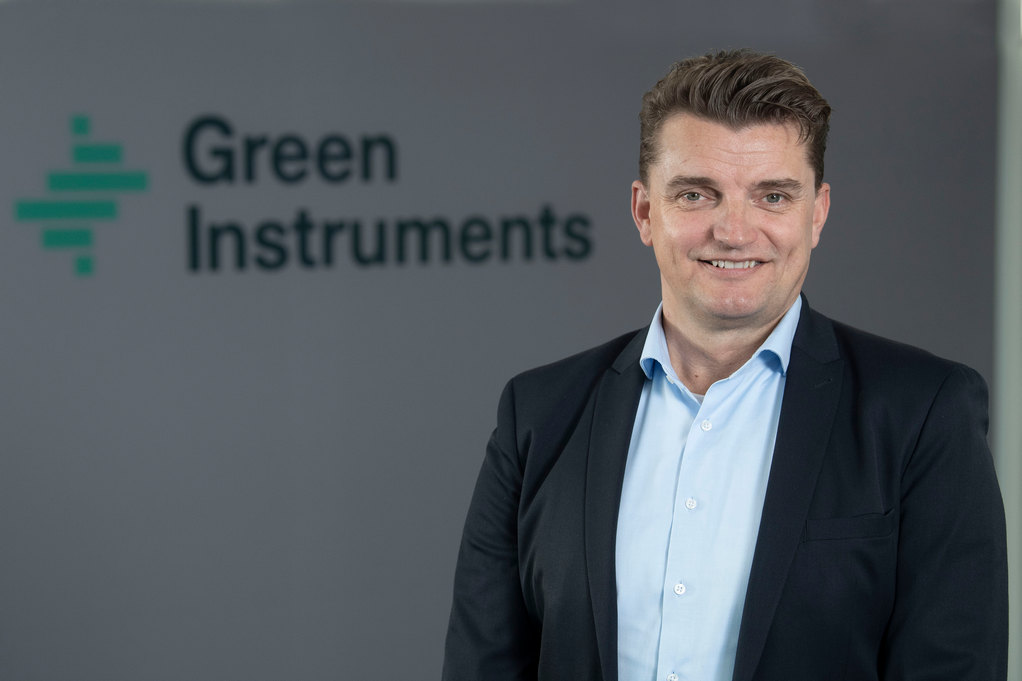Danish company Green Instruments is looking forward to following the debate on black carbon and other harmful soot particles as members of the International Maritime Organization (IMO) meet in London to discuss environmental protection this week. The particles cause the inland ice, including Greenland’s ice, to melt faster, but part of the solution is just around the corner, as shipping companies increasingly embrace advanced measurement equipment that accurately documents ship emissions.
Emissions of black carbon are the second-largest source of global warming within shipping, and emissions of these harmful soot particles are on the agenda as the IMO’s Marine Environment Protection Committee meets from July 3rd to July 7th. Danish company Green Instruments, specializing in emissions control of water, gas, and particles, as well as environmental monitoring on ships, has collaborated with shipping companies worldwide for many years and is experiencing a growing interest in finding solutions to climate problems.
Black carbon refers to small black soot particles that can absorb significant amounts of heat and sunlight. Particularly in Arctic regions, these particles are harmful, as they settle as a film on the inland ice, causing it to melt even faster. That is why more and more shipping companies are investing in advanced measurement equipment for their vessels to measure and monitor the emission of harmful particles. This equipment also makes it easier for shipping companies to comply with regulations in this area.
“We all agree that we must curb climate change, and it is catastrophic that the inland ice is melting. A significant reduction in the emission of soot particles will have a major impact, and we have already developed equipment that can measure ship emissions of these particles. We are more than willing to install it on ships, and we notice a growing interest from shipping companies who also want to make efforts to protect the environment and climate”, says CEO Morten Brandborg from Green Instruments.
Several studies have documented the harmful impact of soot particles, and the IMO has recognized that black carbon is the second-largest source of global warming within shipping, accounting for up to 20 percent of shipping’s climate impact. This issue also concerns shipowners who want to discuss environmental initiatives.
”Last month, we held a Green Day with several shipowners in Greece, where it was clear that there is significant commitment to protecting the environment. It is high on the agenda, and everyone understands that the problems with soot particles and other forms of pollution must be addressed”, says Morten Brandborg.
Focus on ships’ energy consumption
Green Instruments will participate in the IMO’s Marine Environment Protection Committee (MEPC) meeting in London this week to discuss climate and environmental initiatives. In addition to black carbon, participants will discuss other forms of ship pollution, the use of chemicals, and the content of ships’ ballast water.
Morten Brandborg emphasizes that there is already regulation in place for international shipping, but further measures are forthcoming.
In the coming years, there will be particular focus on ships’ energy consumption, as they will be assigned a Carbon Intensity Indicator (CII) rating and classified into different energy efficiency classes starting from June 2024. These rules came into effect on January 1st, 2023, and data will be continuously collected to assign the ships their first rating in 2024. This means that their CO2 emissions must be closely monitored, and this is where Green Instruments’ equipment can play a crucial role as the company has developed products that can precisely measure ship emissions.
“Consumers are tired of empty promises and green marketing strategies. They now demand green data that can validate and ensure that they make the right choices. In the very near future, and perhaps already today, green data will be a huge competitive advantage. This is where the CII rating comes into play. By leveraging the CII rating, shipping companies can improve their competitiveness and market themselves as responsible and sustainable. Ships with the best environmental performance can substantiate their claims using the available measurement equipment on the market”, says Morten Brandborg.
“By using this measurement equipment, shipping companies have the opportunity to demonstrate their responsible and sustainable practices in a transparent manner. With increasing pressure from consumers demanding responsible transportation of goods, shipping companies have a strong incentive to reduce their emissions. Therefore, the use of the CII rating can provide shipping companies with a competitive advantage as they differentiate themselves as leaders in environmentally friendly maritime transport”, Morten Brandborg concludes.
Source: Green Instruments.
Tags: Climate, Environmental, Shipping Equipment



Recent Posts
Scandlines Nears Delivery of Zero Emissions Ferry Following Successful Sea Trials
India faces emission roadblocks with rising net-zero demands
Green Energy Resources invests in two electric Liebherr LHM 550
NYK Launches Continuous Use of Bio LNG Fuel on Car Carriers to Advance Decarbonization Goals
Yang Ming Expands Fleet with Methanol and LNG Dual-Fuel Vessels Under Fleet Optimization Plan
ClassNK Advocates Speed Gap Monitoring to Optimize Fuel Efficiency in Heavy Weather
Wärtsilä’s retrofit package for the Corsica Linea ferry Pascal Paoli has resulted in fuel savings of up to 22 percent Corsica Linea
COSCO Shipping Names Second Methanol Dual-Fuel Containership in Yangzhou